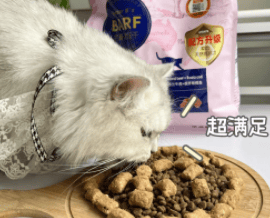Many cat owners wonder what medicine to use to treat nasal congestion in cats when their cats have symptoms such as sneezing, watery eyes, and yellow-green nasal discharge. Recently, a fan raised this question. His cat developed feline nasal congestion caused by the herpes virus and showed typical symptoms.

Next, we will discuss in detail. Comprehensive prevention and treatment measures for nasal branch, and at the end, the impact of a feeding method called barf on improving cats’ immunity is mentioned.
01
Overview of feline nasal bronchitis
Feline nasal bronchitis, feline infectious rhinotracheitis, is a respiratory infection caused by a variety of pathogens , among which herpesvirus and calicivirus are the most common.
Sick cats usually show symptoms such as sneezing and tearing. Once infected, the pathogen will be carried for life. Care must be taken to maintain the cat’s immunity to prevent recurrence of the disease.
02
Identification of clinical symptoms
When a cat has symptoms such as yellow-green nasal discharge, frequent sneezing, and eye discomfort, it may have been infected with the pathogen of rhinoceles infringement.
Environmental changes and other factors may lead to a decrease in the cat’s resistance and aggravation of symptoms.
03
Drug treatment options
For feline nasal branch caused by herpes virus, antiviral treatment with famciclovir can be considered, but it should be noted that although Human drugs (such as famciclovir) may sometimes be used, but this is not recommended.
As an antibiotic, doxycycline can be used once a day at a standard dose of 5-10 mg/kg under the guidance of a veterinarian to help control secondary bacterial infections.

04
Eye care and nose drop application
If the cat’s eyes are also affected, you can purchase special eye drops for local treatment.
At the same time, for nasal secretions, pet-specific nasal drops should be continued to be used until the cat recovers.
05
Nutritional supplementation and dietary adjustment
It is important to ensure that the cat maintains a good appetite and nutritional intake during treatment. Reduce canned snacks and irritating foods, and switch to cat food, egg yolks, chicken breasts and other easily digestible and nutritious foods as the main food.
Lysine can be added appropriately to enhance the cat’s immunity, and if necessary, use pet-specific nutrient solutions such as viyo to supplement nutrition.

 扫一扫微信交流
扫一扫微信交流
发布评论